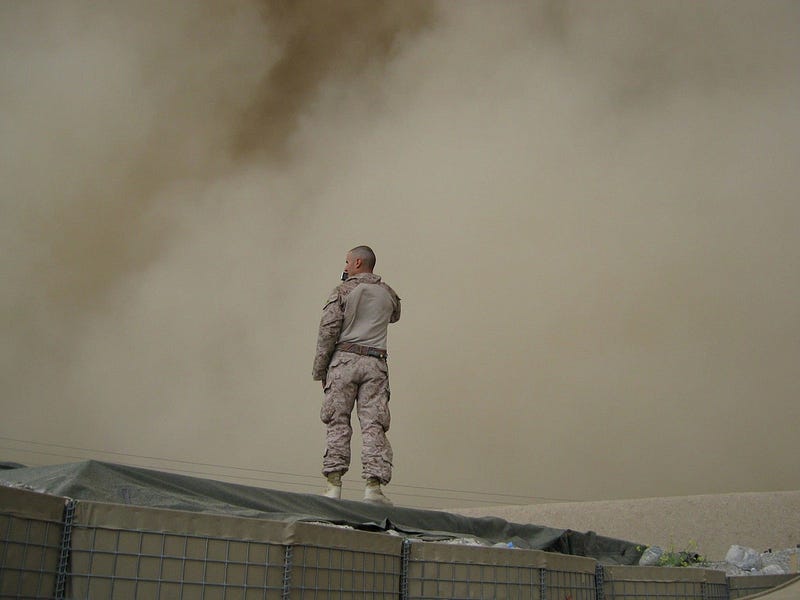By: Zalmay Khalilzad
Among the more intriguing parts of Barack Obama’s recent interview with Jeffrey Goldberg is the vision he expounds for Middle East order. The President traces the proxy wars and chaos of the region to the “competition between the Saudis and the Iranians” and argues that the solution is for the Saudis to “share” the Middle East with Iran and “institute some sort of cold peace.” In fact, I come to a similar conclusion, based on lessons from my dealings with region, in a book, The Envoy, which will be published by St. Martin’s Press next week.
Obama believes that the Middle East commands an outsized place in US foreign policy at the expense of other issues and regions important for the long-term US position in the world. The President is right to want to avoid getting bogged down in the “tribalism” and sectarian conflict in the region. Such an entanglement would zap US energies and produce over-extension.
But the US has vital interests in the region, such as countering terrorism, preventing proliferation and ensuring energy security that would command our attention regardless. While an agreement between Saudi Arabia and Iran would help reduce a key source of conflict in the region, the President does not address what kind of an agreement is needed or what needs to be done to bring it about.
When Europe ended its prolonged religious war — the Thirty Years War — the major powers were exhausted, and Catholic and Protestant monarchs alike sought to preserve their own power rather than expend further resources on sectarian conflict. The result was the Westphalia agreement, which ushered in a long period of great power peace. It is unclear whether the powers of the Middle East are sufficiently motivated to seek a settlement, though some leaders have articulated such intentions. If they are ready, however, they are unlikely to make progress on their own and in the immediate future.
Three elements might serve as a point of departure. First, as was the case of the Westphalia agreement, there must be mutual acceptance of religious differences. The leaders of the region must agree that Sunni and Shiite Islam are equally legitimate sects of the religion. At present, neither side accepts this point. Wahhabis and Takfiris, who are very influential forces in Saudi Arabia, do not accept Shiites as legitimate Muslims entitled to rights equal to those of the Sunnis. Iran, too, has problem in dealing with its Sunni populations. For example, there are no major Sunni mosques in Tehran.
Second, an agreement is needed on how Shiite- and Sunni-majority countries in the region should be governed and how minorities in those countries should be treated. This is the root of the problem in Syria and Iraq. In Iraq, the Shiites are a majority, but they are a minority in Syria. Iran wants domination by the Shiites in both countries. A broad agreement on equitable power sharing at the center and/or federalism and local autonomy for Syria, Iraq and Yemen is needed. Also, movement toward constitutional monarchies, which would allow for popular political participation, would assist in stabilizing Bahrain and others.
Third, an agreement on non-interference in the internal affairs of neighbors is required. The President’s idea of Saudi Arabia and Iran sharing the region implies a spheres of influence approach. That is one option, though the Saudis and several Gulf states argue that, since the region is Arab, Iran as a non-Arab state should not have a significant role in internal affairs of the Arab states. A better alternative, patterned on the Westphalia agreement, is precluding interference in internal affairs of other countries. Iran and Saudi Arabia, as well as Turkey, are heavily involved in a number of states. An accord among these three countries, perhaps guaranteed by the United States, Europe, China, and Russia, to end this practice is essential.
Verification and enforcement of such an agreement would be especially difficult. At a minimum, it would require formation of a new regional cooperation organization that builds confidence and has a conflict resolution mechanism, along the lines of the Organization for Security and Cooperation in Europe. The hardest challenge would involve monitoring clandestine support for militias or political groups — the kind of proxy competition that dominates the region.
While an agreement among the major regional powers would be desirable, it will not be easy. What will be required to start a process? Two steps are critical. The Saudi Arabia and the Gulf states are in a weaker position than Iran. During the past few years, Iran has strengthened its position more effectively than Saudi Arabia. A balance of power, which requires strengthening the military capabilities of Saudi Arabia and the Gulf States and a continuing relationship with the US in the face of a continuing Iranian military buildup, would be important. Without a balance of power in the region that checks Iran’s bid for regional hegemony, Saudi Arabia and the Gulf states may not have the confidence to move toward engagement with Iran. Progress toward a settlement in Syria will also help.
To start a regional dialogue to promote an internal political settlement in Syria, Washington could encourage countries like Oman, which have good relations with Saudi Arabia and Iran, to explore ways to establish a new multilateral organization in the Middle East. Just as ASEAN promoted regional integration through economic cooperation in Southeast Asia, a new regional forum for the Middle East could facilitate regionalization through engagement on security issues. Once there is such a forum, the international community including the United States, China, Russia and others could help by endorsing the principles of mutual acceptance between the regional states and sects.
For President Obama, ASEAN is a particularly salient precedent to consider. In advocating for a withdrawal from the Middle East, the President explicitly contrasts the region’s despair with the promise he sees in Southeast Asia. Yet, it was not too long ago that Southeast Asia itself was derided as the Balkans of Asia. Successive American presidents nevertheless resisted the temptation to abandon the region and played a role in helping the region move toward greater stability and progress — a history that, one hopes, will weigh on the President as he navigates the Middle East in his final year in office.

Image by Tyler Barns
